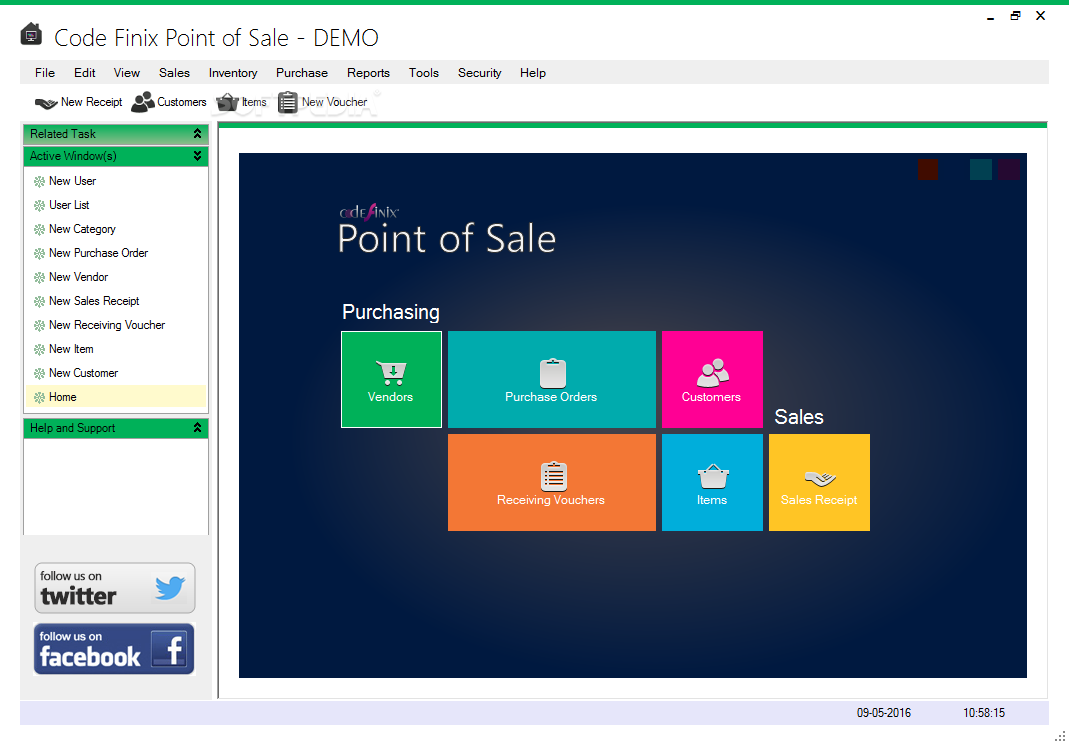

#DISPLAY CODE OF POINTS IN LIBRECAD REGISTRATION#
Copyright Office accepts DWG and DWF formats for registration of architectural drawings. AutoCad is also an acceptable format for 2D and 3D Computer Aided Design vector images on the RFS. See Recommended Formats Statement (RFS): Still Image Works. Widely used proprietary formats are acceptable if needed to be a faithful representation of a work.

See Notes below on related publishing formats from AutoDesk.Īmong vector graphics formats, the Library of Congress has expressed a preference for the AutoCAD Drawing Interchange Format ( DXF). See Notes below on relationship between DWG and DXF_ASCII.ĭWF (Design Web Format) and DWFX, proprietary formats from AutoDesk for publishing designs for review, not described separately on this website. For many situations, the DXF format can still contain all the information in a source DWG file. Originally designed to be an ASCII equivalent to DWG. In the domain of architecture, used for collaboration among architects and engineers designing, constructing, and maintaining buildings.ĭXF (AutoCAD Drawing Exchange Format) Family, ASCII variant. Used primarily for creation of design drawings and models and as master format for deriving renderings in two or three dimensions. See Notes below for more sections and object types that might occur in DWG files.

Non-graphical objects: These include dictionaries, settings, etc.Entity objects can include handle references for related objects, including child ("owned") objects and parent ("owner") objects. Entities (graphical objects): These include simple graphical entity types such as LINE, CIRCLE, VERTEX and more complex types such as SHAPE, POLYLINE, 3DFACE, 3DSOLID, SPLINE, etc.Classes: Holds information relating to application-defined or custom classes whose instances (objects) appear in other sections.A duplicate of the header section is stored near the end of the DWG file. A DWG file may contain structures that are no longer used hence the best way to interpret a file is to start from the header and trace references from there until all references have been followed. The header also includes information needed to read and write the particular file: references to locations in the file where other sections begin section lengths flags to indicate how much of the file content is encrypted and a stream of handle references to other structures. Other header variables include: default units and styles for the drawing drawing size limits coordinate systems to use for spatial positioning a project name creation and modification dates and times, etc. The first "variable" in the header is the code used to identify the DWG format version (see File type signifiers below). Header: This section always comes first in the DWG file.Cyclic redundancy checksums (CRC) are used extensively for error detection.Ī typical DWG file will include at least the following sections: See Notes below for more on handles in DWG files. Handle references may indicate ownership or simply be pointers to other structures. Internal connections in the drawing file use identifiers for objects (including the graphical entities) known as "handles." Objects declare their own handles and may refer to other objects via handle references. This contains component graphical elements (known as entities) and other objects that support the editing and rendering of drawings. The primary substance of a drawing is in a section with name AcDb:AcDbObjects. The syntactic structure of a DWG drawing file includes sections and section substructures. See Notes below, for information about the chronological versions of the AutoCAD application and associated versions of the DWG format. The compilers of this resource have chosen to describe the DWG family of formats in a single document. Autodesk lists past versions of DWG at AutoCAD Release History. One more recent version, associated with AutoCAD 2018 through 2020, is in use. The format has been updated frequently as the AutoCAD product has been enhanced.Īs of January 2020, PRONOM had records for 19 chronological versions, none of which is publicly documented by AutoDesk. AutoCAD 1.0 was released in 1982, but the origins of the DWG format are from the late 1970s, when it was the native format for a CAD package called Interact. DWG is a compact binary format that stores and describes the content of 2D and 3D design data and metadata. 2 points : Increase or decrease the size of a selected entity from a reference point by a defined factor for both axis.DWG is the proprietary native file format for AutoCAD, one of the most popular computer-assisted design (CAD) packages.


 0 kommentar(er)
0 kommentar(er)
